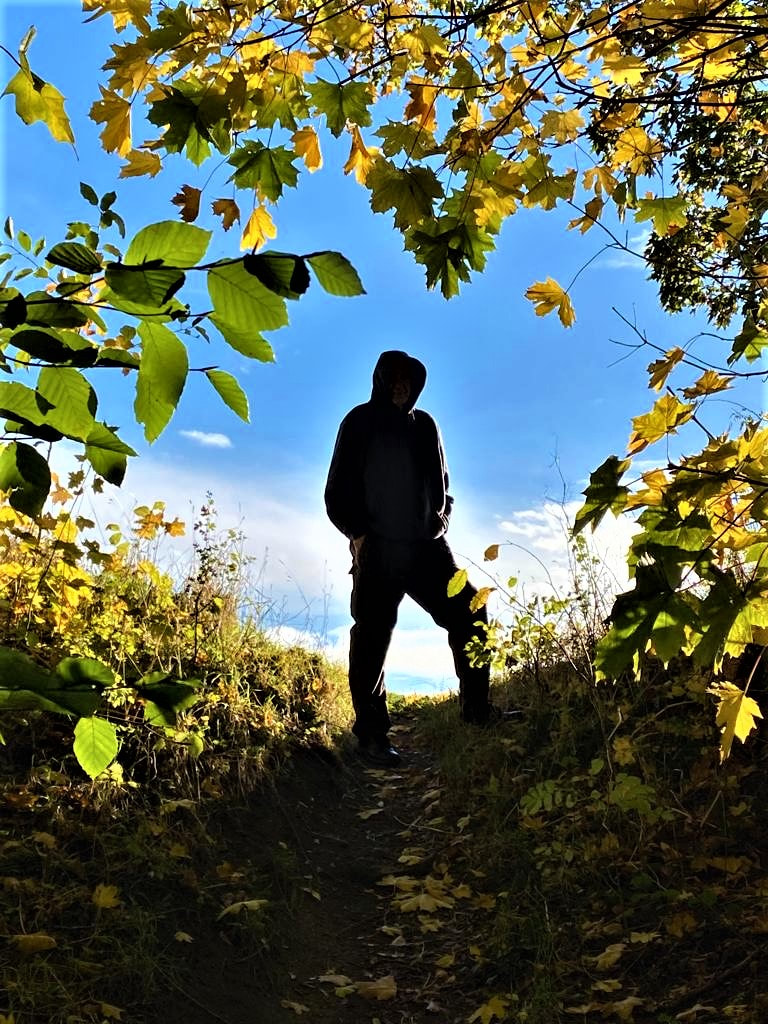|
'95% of what we think we know, we have simply accepted from what other people have told us.' (Dennis Hiebert) Nothing adds up. How can we identify hidden assumptions, implicit agendas and vested interests that lay behind what we see, hear and read in the media? Perhaps the answer to this question has rarely been so critical. Democracy and social cohesion within and between peoples and nations are threatened by manipulation and misrepresentation of what we may ordinarily regard as truth. Following writer Mark Twain, actor Denzel Washington commented famously, ‘If you don’t read the news, you’re uninformed. If you do read the news, you’re misinformed.’ Take international news in the UK. Why are we so focused on Russia-Ukraine and Israel-Gaza? Why haven’t we noticed, apart from the occasional glance, the terrible civil wars in Sudan, Myanmar or Democratic Republic of Congo? Why do we call Russia’s brutal intervention in Ukraine a ‘full-scale invasion’? Why do we assume that increasing NATO size-spend is the only solution? If Israel’s bombing is indiscriminate, why has it killed, proportionately, so few ‘adult men’? Why didn’t we see outraged street demonstrations against horrific, widespread atrocities by Daesh? These are profoundly important, deeply complex and extremely painful issues and we rarely have access to the underlying research or information that could help us, as ordinary and concerned citizens of the world, to discern and decide how to act. We are presented with multiple, competing viewpoints and demands and this can feel both perplexing and paralysing. I don’t know the answers to such questions yet I do believe they should play at least some part in shaping my response. I will share some considerations that may help us to avoid sleepwalking blindness. As we’re exposed to news reports, what are we noticing and not noticing? How far does what we’re noticing appear to confirm what we already believe or want to believe? How open are we to having our assumptions, our preconceived beliefs and ideas, challenged to reveal something different or new? Why is the news presenter or media channel presenting this particular story or angle? What do they want us to believe, think, feel or do? Who or what is being excluded by the reporter’s narrative? Whose voice, perspective or experience is being ignored or filtered out? Behind the scenes: who owns and-or funds the media channel, the presented report or the research that underpins it? How rigorously are research methods tested to avoid implicit bias? Are views and experiences presented in a report genuinely representative of a wider and diverse population, or different sides to a conflict? In interpreting statistics, is a reporter presenting a case selectively, or cherry-picking results to show or advocate a particular stance? In short, be sceptical – and look for evidence that supports or contradicts the research-reporter’s ‘news’.
20 Comments
At a time when geopolitical tensions between NATO-EU and Russia are on the increase and depicted starkly as such in the media, I showed a video of a Russian 'hell march' to an international group and asked them: a. What do you notice; b. How do you feel; c. What does it mean? It opened a deep conversation that emphasised the need for critical reflexivity in interpreting experiences and events. A Chinese participant looked quite disdainful and said it reminded her of similar 'propaganda parades' in her home country, designed to make people feel compliant and positive about the Communist party state. A German participant said it filled her with fear, evoking stories she had heard from elderly family members about horrors under Soviet occupation at the end of the Second World War. A UK participant, perhaps with the spirit of Brexit still reverberating fresh in the background, said she found the enforced uniformity and conformity disturbing. A Filipina participant from an Hispanic cultural background, who had lived under a repressive military dictatorship, said she liked how the soldiers were as-if dancing to a rhythm and doing something constructive that displayed positive talent. I noticed banners in the background depicting 1941, the year in which the Nazis had unleashed a war in the East that resulted in unspeakable terror and devastation. As a passionate anti-Nazi, I saw the march as an assertive symbol: a 'never-again'. We reflected on our different selective perceptions, feelings and interpretations and the profound influence of ourselves-as-filters as we look out onto the world. In a similar vein, at a Gestalt coaching training workshop last week, I posted an image on screen of a tree in wheat field with dark clouds looming overhead. I asked the group what they would notice in 3 imagined scenarios: 1. As a child, you loved to climb trees; 2. You are walking the countryside and have forgotten to bring a raincoat; 3. You and your family have had no food to eat for a week. We noticed that we notice what matters to us in the moment. Different people-groups may notice different things in the same situation, or the same person-group may notice different things in the same situation at different times. We attribute meaning based on our beliefs, values, hopes, fears and expectations. This includes personal and shared-cultural memories, emotions and imaginations. As we move ahead this year, I pray that I-we will do so with eyes wide open. What may appear to us as self-evident, real and true may reveal as much about us as who or what we observe: if we are willing to see it. What can we do to create greater critical reflexivity? How can we address blind spots and hot spots to open up fresh possibilities, address risks – and take a stance that is sound? My daughter is a guinea pig. This afternoon in the bright sunshine, I invited her to take part in an experiment. First, we stepped out into the street and, gesturing to a line of cars parked at the roadside, I asked, “If you were to buy a car, what colour would you choose, or definitely not choose?” She answered, “I’d love a white car.” “OK,” I replied, “let’s go for a walk into town and back. Your task is to count every white car that we pass. If you have the same number as me when we get back here, I will give you £10. How does that sound?” She grinned and willingly agreed.
An hour later, we stopped back where we had started and I asked her, “So, how many red cars did you see?” She looked at me blankly. “I didn’t see any red cars. I counted 206 white cars.” In fact, we had passed 93 red cars, yet she had been so focused on the white cars that she hadn’t seen a single one. This simple experiment illustrates an important psychological phenomenon known as selective attention: “The ability to pay attention to a limited array of all available sensory information…a filter that helps us prioritize information according to its importance.” (Bertram Ploog, 2013). Gestalt psychotherapist Geoff Pelham comments that, in any given relationship or situation, we notice who or what matters most to us (The Coaching Relationship in Practice, 2015). This idea of who or what matters most reflects beliefs, values and emotions. In this exercise, my daughter was influenced and motivated by her beliefs (that this experiment would serve some useful purpose), values (the prospect of a £10 reward) and emotion (her choice of a colour she likes). These factors combined to ensure concentration on a task (counting white cars) that required selective attention. Why is this insight significant in our work with people? The principle extends beyond literal-visual perception to deeper psychological processes too. Our beliefs, values and emotions subconsciously influence our focus and act as filters. We construe personal-shared narratives based on what we perceive. Such narratives appear to us as-if reality, as-if totality, and often without any awareness of who or what we have excluded. As such, narratives always point to and reveal, implicitly, who and what matters most to a person, group or culture, rather than to a definitive account of reality per se. A key question is, therefore: who or what are we, and others, not-noticing? If we can enable a shift in perception, a re-shaping of a narrative, what then becomes possible? Interested to do further reading in this area? See: The Art of Looking: Eleven Ways of Viewing the Multiple Realities of our Everyday Wonderland. ‘Words can inspire. Words can destroy. Choose your words well.’ (Peter Economy) In English, we use an expression, ‘biting my lip’ to describe a moment when we’re yearning to say something, yet choose self-restraint. And there can be good reasons to hold back. Our words could prove hurtful or damaging…or decidedly career-limiting. Yet there are situations in which we should speak up. What if our safety filters auto-override our personal need for congruence; or the needs of a situation where our silence could be taken as tacit agreement or collusion? What if our fears of the consequences of speaking out, for instance against some grievous injustice, allow the violation to go unchecked? What if we’re simply too shy or polite to speak out for risk of transgressing our own or others’ cultural expectations? Anti-Nazi Martin Niemöller’s words can still haunt us: ‘First they came for X, and I did not speak out because I was not an X’. It’s a silence that can leave our consciences seared and others devoid of support. Yet we also know the amazing, positive, transformative power of words to spark the imagination, ignite a passion, set us brightly ablaze. Think of first-class orators, of Winston Churchill or Martin Luther King: of words that inspired such great conviction, commitment and courage. Words can reframe, reconstrue, change everything we think and believe is possible. Words can touch us deeply emotionally; instil confidence, engender hope, enable us to receive and convey love. As a follower of Jesus, I love the mystery of words: ‘In the beginning was the Word, the early word, the first word, the I am who I am word, the with-God word, the was-God word. The without-whom-nothing word, an unheard-of word behind words. World-making word. Speaking the language behind language.’ Words used playfully, creatively, evocatively, provocatively can allow us to grasp and express reality, idea, concept, abstract and experience that lay beyond words. At times, I have spoken words when I should have stayed silent and stayed silent when I should have spoken. It has felt like dancing on a knife edge; trying to weigh up pros and cons, rights and wrongs, implications and consequences, all in a split second. Sometimes, I have found myself lost for words, or I have used words clumsily or harshly without enough care for others. In seeking too hard to be more considered or diplomatic, my words have felt too weak, cautious or ineffective. At other times, however, I have seen and felt the dazzling, dynamic influence that life-giving words can have on a person’s whole world, outlook and stance; a team’s relationships; an organisation’s effectiveness; a society’s vision and hope. I have seen how words can change…everything. I try to use words with courage, humility, creativity and love. What part do words play in your life, work and relationships? If we use words well, what becomes possible? I was co-facilitating a coach training workshop for leaders last week. Sun was streaming in through the windows and I was thinking about how to illustrate the concept of psychological filters and distortions. At that very second, I looked up and saw this perfect image. A real Plato’s Cave moment. Pointing to the window blind, I asked participants to imagine what the window frame is like behind it, based purely on what they could see. ‘Curved, bent, twisted, grey?’
In my experience as a psychological coach, this can be a most important and valuable insight. We continuously filter experiences so that what we perceive and what meaning we attribute to it is influenced as much by what is happening within us as anything that is taking place externally to us in the room. I’ll introduce four types of filter or influence in these notes below, along with a brief explanation for each: projection, transference, culture and emotion. You may have heard the expression, ‘We don’t see things as they are, we see them as we are.’ This idea of projection is a simple and complex one. Watts illustrates it like this: imagine a projector on your shoulder, projecting an image onto a person standing in front of you. What you see is a combination of what they actually look like with an overlay of aspects of the projected image. This distorts what we perceive so that we partly relate to the person as they are, and partly as we are. The principle here is that we subconsciously project aspects of ourselves onto those we encounter. At a functional level, it helps us to identify and empathise with people. It’s as if we recognise something of ourselves in them. However, we also project aspects of ourselves onto others that we don’t acknowledge or recognise in ourselves. Perhaps I’m not aware of how compassionate I am but see it in others around me. Perhaps what I find annoying in others is a denied aspect of me too. Our perceptions are also influenced by our past. It’s as if we filter all new experiences through what we have experienced previously and what conscious (rational) or subconscious (intuitive) conclusions we have drawn from it. Human Givens therapists talk about this as pattern matching. If we encounter someone or something that reminds us of a previous person or event, it may re-trigger that previous experience so that we experience the new event along with the past. I see this happen a lot in coaching conversations. Clients may react to experiences in the present as if they are unknowingly re-living similar experiences from the past and transferring something of those experiences onto how they are interpreting the present. This kind of resonance can create an amplifying effect, causing the person to overreact to a person or issue in the here and now. Surfacing the pattern, the transference, can be releasing and create a new sense of perspective. What and how we perceive someone or something in a situation is also influenced by our cultural beliefs and values. It’s as if there is a permeable boundary between ourselves and others so that what we experience is us - but not only us. Cognitive behavioural research shows how what we feel in any given situation is influenced profoundly by what we believe about that situation. In this sense, our culture acts as a filter, influencing what we notice, or not, and what sense we make of it. Finally, our perceptions are influenced by our physical and emotional state in the moment. If a person is feeling highly stressed, for instance, they may shift into fight/flight/freeze mode which significantly affects their cognitive abilities. He or she may experience a whole range of cognitive distortions that nevertheless appear to them, in that moment, as reality. I’ve written more about this in a short article: Fresh Thinking. Perhaps the most significant point here is that for most of us most of the time, we are unaware of the filters we hold. We continually create and recreate our perceived realities. When we look at the window blind, we may assume we are looking at the window. We believe that what we perceive is what is. As far as we know, the window frame is curved, bent, twisted and grey – that is, assuming we know or believe there is a separate reality, a window frame, beyond the blind. As leaders, coaches and facilitators, we can grow in awareness of our own filters and their potentially distorting effects. We can learn to notice when we are projecting or transferring onto people and experiences. We can grow in awareness of our cultural beliefs and how they shape what we perceive and what we value. We can grow in awareness of our emotional states – what triggers them and how to handle them in the moment. We can enable others to grow in awareness too, thereby broadening the range of possibilities, of options, available to them – and to us. I would be interested to hear whether anything I’ve described here resonates with your own experiences. Notice what the photo, my language, my way of presenting ideas evokes in you. How do you feel as you read this? What does it remind you of? What are you noticing and not noticing, including within and about yourself? I look forward to hearing from you! |
Nick WrightI'm a psychological coach, trainer and OD consultant. Curious to discover how can I help you? Get in touch! Like what you read? Simply enter your email address below to receive regular blog updates!
|








 RSS Feed
RSS Feed